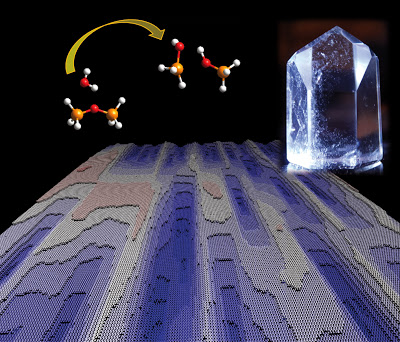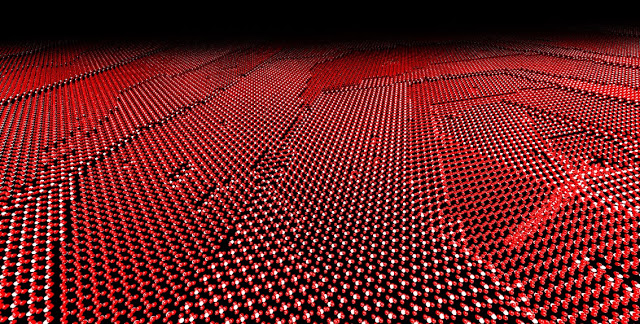

| Visitors Now: | |
| Total Visits: | |
| Total Stories: |

| Story Views | |
| Now: | |
| Last Hour: | |
| Last 24 Hours: | |
| Total: | |
How Water Dissolves Stone, Molecule By Molecule
“We need to gain a better understanding of dissolution mechanisms to better predict the fate of certain materials, both in nature and in man-made systems,” said lead investigator Andreas Lüttge, a professor of mineralogy at MARUM and professor emeritus and research professor in Earth science at Rice. His team specializes in studying the thin boundary layer that forms between minerals and fluids.
Boundary layers are ubiquitous in nature; they occur when raindrops fall on stone, water seeps through soil and the ocean meets the sea floor. Scientists and engineers have long been interested in accurately explaining how crystalline materials, including many minerals and stones, interact with and are dissolved by water. Calculations about the rate of these dissolution processes are critical in many fields of science and engineering.
In the new study, Lüttge and lead author Inna Kurganskaya, a research associate in Earth science at Rice, studied dissolution processes using quartz, one of the most common minerals found in nature. Quartz, or silicon dioxide, is a type of silicate, the most abundant group of minerals in Earth’s crust.
Credit: MARUM & Rice University
“The new model simulates the dissolution kinetics at the boundary layer with greater precision than earlier stochastic models operating at the same scale,” Kurganskaya said. “Existing simulations rely on rate constants assigned to a wide range of possible reactions, and as a result, the total material flux from the surface have an inherent variance range — a plus or minus factor that is always there.”
One reason the team’s simulations more accurately represent real processes is that its models incorporate actual measurements from cutting-edge instruments and from high-tech materials, including glass ceramics and nanomaterials. With a special imaging technique called “vertical scanning interferometry,” which the group at MARUM and Rice helped to develop, the team scanned the crystal surfaces of both minerals and manufactured materials to generate topographic maps with a resolution of a just a few nanometers, or billionths of a meter.
“We found that dissolution rates that were predicted using rate constants were sometimes off by as much as two orders of magnitude,” Lüttge said.
The new method for more precisely predicting dissolution processes could revolutionize the way engineers and scientists make many calculations related to a myriad of things, including the stability of building materials, the longevity of materials used for radioactive waste storage and more, he said.
“Further work is needed to prove the broad utility of the method,” he said. “In the next phase of research, we plan to test our simulations on larger systems and over longer periods.”
Contacts and sources:
Jade Boyd
Rice University
Source: http://www.ineffableisland.com/2013/12/how-water-dissolves-stone-molecule-by.html




